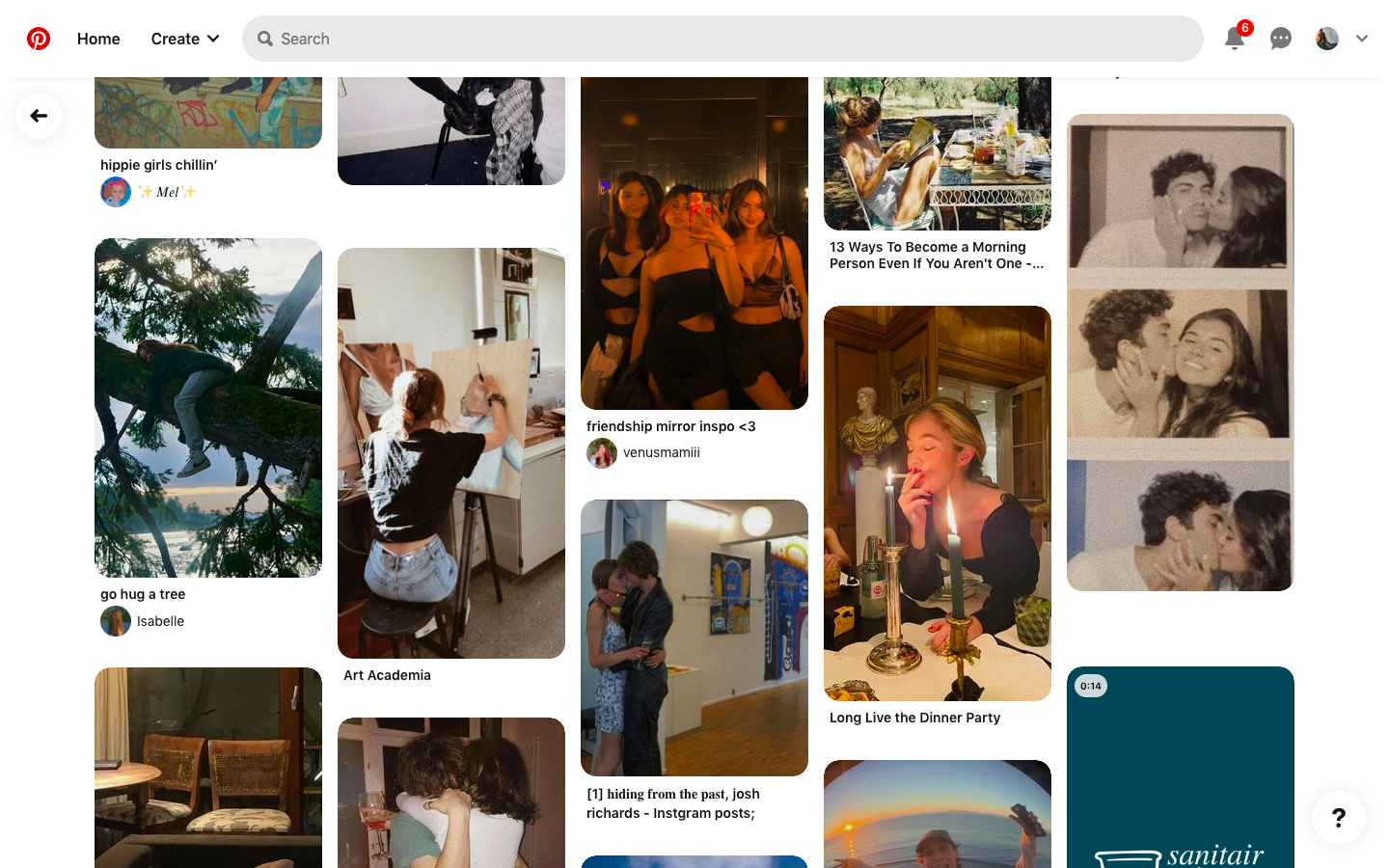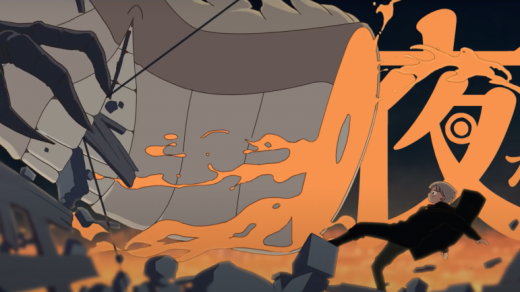What is pinterest?
Pinterest is a digital platform based on the consumption and sharing of inspirational images of products and experiences. (1)
The content of your feed is highly personalised and varies according to the individual’s demographic and field of interest alongside what they use Pinterest for. The digital platform is for example a very useful tool for artists, graphic designers and other types of creators to get inspired by other people’s work.
Pinterest is also often used for shopping as big and small businesses alike can post on the platform their products, making it possible for users to browse in search of new, trendy or interesting items to purchase.
In this post, however, I will focus on less explicit forms of advertisement.
Selling a fantasy
An interesting phenomenon on Pinterest is that people are often shown images that have barely any explicit connection to a purchasable product or function as practical inspiration. These images often represent scenes of everyday life in an aesthetically desirable way, immersing the user in a fantasy. This fantasy is often very hard if not impossible to reach for the viewer of the image as it is often strictly bound to economic privilege and strict standards of physical appearance.
Because of Pinterest’s disclosed intentions of being a palace of inspiration, These images create the illusion that you can “get inspired” by them and somehow reach the represented aesthetic. As you scroll through your feed, you are strongly engaged and included in the fantasy shown to you, unconsciously believing that that could be you.
As you are transported into that fantasy, the thought that you can reach the represented lifestyle keeps you blind to the reality that the object of your desire is a highly selected two-dimensional representation that lacks the complexity and variables of human life or any regard for personal identity, individuality and true self-expression.

An example of this is the great number of pictures of friend groups and couples (image 2). These pictures often have little artistic value and function more to sell a lifestyle than anything else. You won’t get “inspired” by a picture of friends looking good together or a couple being cute, you desire to be them and are transported by that fantasy. That fantasy becomes a standard of judgement for your real life and creates the desire to seek the same type of representation but in a complex three-dimensional reality that can’t possibly answer to the same standards.
The Spectacle of Pinterest’s images
In Guy Debord’s Society of the Spectacle, the French theorist identifies how people are detached from their own desires and real-life interaction in favour of their representations. (3) In the society of the spectacle, individuals perceive and relate to real-life objects through their representation as the result of the reification of both material and immaterial objects. (4) According to Debord, every aspect of life becomes lived through their representation, ultimately turning experiences into commodities. (5)
Although this theory can be subject to criticism, there is a strong connection between Debord’s society of the spectacle and how certain kinds of content function.
As we are shown highly selected pictures of strangers’ lives we are pushed to aspire to them, but because they do not show the complexity of the real-life experience what they are selling is the representation and not at all the experience itself.
In this way for many users the initial idea of productive inspiration loses its purpose, becoming more similar to a market of representation in which the spectacle acts undisturbed masked by an illusionary inspirational value.
Final notes
Despite my criticism I do enjoy Pinterest as a platform. As I pointed out in the beginning of this post, it does have many positive functions and in multiple instances I found it very useful: from comparing different models of shoes to finding subjects for my drawings or tattoos it was a great place of inspiration for me. I do however try to stay aware of my relationship with the platform as all of the dynamics I just described are very easy to fall into without even realizing.
To conclude, I find it important to point out that all of what I wrote is based on my experience and the ones of my friends. Let me know in the comments if you relate with what I wrote and if not what your experience with it is!
Endnotes:
(1) “All about Pinterest,”Pinterest Help Center, accessed October 2022, https://help.pinterest.com/en/guide/all-about-pinterest .
(2) Guy Debord, Society of the Spectacle, trans. Black & Red (1967), Chapter 1.
(3) Debord, Society of the Spectacle, chapter 1.
(4) Ibid.
(5) Ibid.
Bibliography:
Debord, Guy. Society of the Spectacle. Translated by Black & Red, 1967. https://www.marxists.org/reference/archive/debord/society.htm .
Pinterest Help Center. “All about Pinterest.” Accessed October 2022. https://help.pinterest.com/en/guide/all-about-pinterest
Images:
(image 1) screen recording Pinterest.it
(image 2) screenshot Pinterest.it




So I also use pinterest, quite a lot more than I should to be completely honest, but my experience is very different from your own. I use pinterest for three things: drawing references, writing prompts, and anything and everything related to the fandoms I’m in. Because of that, I am completely missing the ‘inspiration aesthetic’ that you so vividly describe in your post. On the other hand, that is probably due to the fact that I’m not really using the app as intended. I suppose I do use it for inspiration, but the inspiration I’m after is very concrete, prompts and drawing references are very tangible, in contradiction to for example, having a healthy life style, which is an amalgamation of multiple, less tangible things.